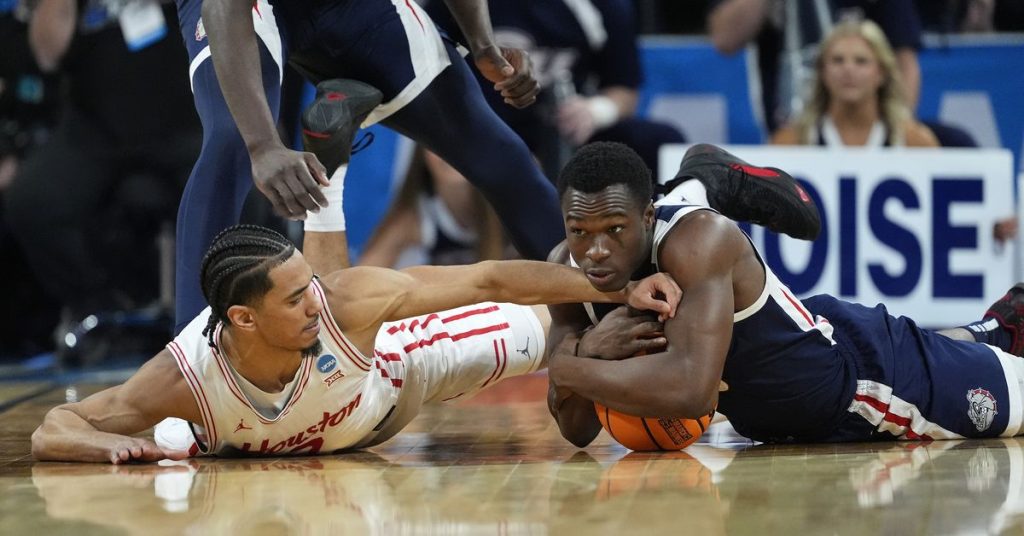Not all fans are excited to watch their team play defense; many tolerate it. Some might check their phones, refresh their drinks, or gaze blankly at the shot clock until the action shifts. For Gonzaga fans, this is likely a sentiment they’ve come to understand more in theory than in reality. The Zags haven’t been terrible defensively, but for much of the past 25 years, they’ve primarily focused on a high-scoring offense, generating enough points to overshadow any defensive shortcomings. Their style emphasizes speed, spacing, and precise offensive tactics. However, when the defense truly shines—when rotations are swift, pressure is applied effectively, and shooters are rattled—it creates a different kind of beauty that has been lacking in recent Gonzaga games, though that could soon change.
As the Zags head into the 2025-2026 season, they will be without Ryan Nembhard, Nolan Hickman, or Khalif Battle, who were crucial to last season’s offense. Fortunately, the bench possesses more defensive talent than any Gonzaga lineup in recent times. This means the Zags won’t have to rely on scoring heavily to remain competitive; they can focus on tightening defense early, stringing together stops, and influencing the game even if shots don’t fall. The team’s proactive defensive approach is something to be excited about, as it can ease pressure on other aspects of the game.
The Breaking Point
In the midst of an already tough month for Gonzaga fans, one particularly grim game stood out. After Santa Clara sank their 18th three-pointer during Gonzaga’s home loss, head coach Mark Few appeared at a loss. The coaching staff had exhausted every defensive strategy they could think of. They attempted trapping, switching, and sagging defenses, but to no avail. Following the game, Few lamented, “On ice skates,” after witnessing his team concede 103 points at home to a conference rival for the first time ever.
This defeat followed a heartbreaking 97 to 89 overtime loss against Oregon State, where the Beavers shot 59 percent from the field and received significantly more free throws than Gonzaga. The Zags had dropped two league games back-to-back for the first time in over a decade, and the recurring defensive struggles were beginning to feel like a persistent issue.
After some reflection, Nolan Hickman candidly stated, “Missing assignments and our spirit… We can’t play like that… Got to have some heart.” By last winter, a disconnect had become evident, especially late in games when the pressure mounted. This led to impulsive rotations and an urgent desire to score rather than focus on defensive stops. Braden Huff emphasized the need for accountability, stating, “We’ve got to know our assignments and take pride in that.” Fortunately, that same team eventually found its footing.
During the final 15 games of the 2024-25 season, Gonzaga made subtle adjustments that revitalized their defense, holding opponents to an average of 65.5 points per game on 39.4 percent shooting. Their improved defensive efficiency surged significantly in the metrics, moving them into the top 30 nationally, a transformation marked by effort and enhanced communication.
What’s New
With Tyon Grant-Foster, Jalen Warley, and Braeden Smith joining the roster, Gonzaga now has a rotation brimming with players capable of guarding effectively and preventing easy shots near the rim, even if offensive production dips. They can switch seamlessly, maintain defensive integrity despite movement, and disrupt an opponent’s rhythm before they establish any offensive flow.
This season, Gonzaga can finally deploy a comprehensive defensive lineup, featuring five players who are committed to getting stops rather than relying on ball touches or offensive rhythm. With Innocenti, Warley, and Diagne able to intensify defensive pressure, Few no longer faces the dilemma of choosing between offensive consistency and defensive strength. Instead, he can seamlessly alternate between different defensive schemes without sacrificing efficacy.
This enhanced depth fundamentally alters how games are played. Gonzaga can transform a lead into a drought or a deficit into a dominating performance, employing presses, traps, or zone defenses without losing cohesion. The pressure now shifts to the opposing teams, allowing Gonzaga to control the pace, regardless of their scoring output.



